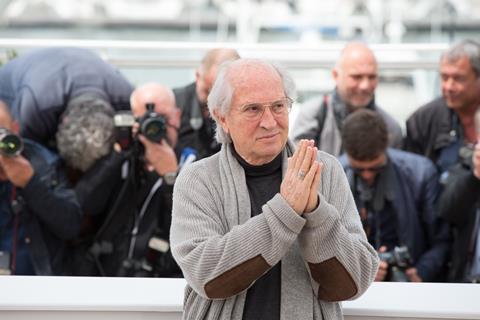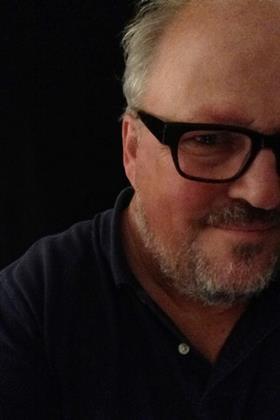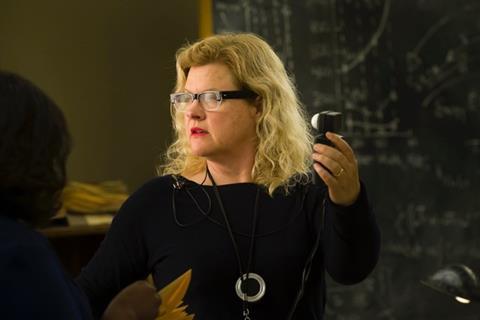To celebrate the centenary of the ASC, IBC365 pays tribute to the international cinematographers who have shaped the art of motion pictures and asks ASC members who they think is the greatest of all time.

From its earliest days, the art and science of cinematography has been curated by the profession’s pre-eminent body the American Society of Cinematographers (ASC) which celebrates its centenary this year. Far from embracing only American born cinematographers and protecting the exclusive interest of Hollywood, the ASC is widely recognised for its leadership and educative role in influencing the creation of motion pictures on a global level.
The ASC’s 15 founding members in 1919 not only included pioneers from the silent era like Arthur Edeson, who later shot Casablanca, and Joseph D. Jennings, who lensed gangster classic Public Enemy, but also included Londoner Charles Rosher, Australian LeRoy Granville, two Russian emigres (Victor Milner, Philip Rosen) and Italian-born Eugene Gaudio.
They formed the society principally to engender respect for the role of the ‘cameraman’ as a creative force first and as a technician second.
“Until that time in Hollywood the cameraman was considered a professional who made sure images were exposed and no heads were cut off in the frame,” explains the ASC’s Dutch-born current president Kees van Oostrum. “Slowly but surely, the creative contribution and the creative tools of the ‘cameraman’ were evolving and gave birth to the conviction that the visual language was theirs and consequently the name of ‘cameraman’ changed to cinematographer.”
Through the ASC, cinematographers advanced filmmaking technology, exchanged ideas about the latest techniques through masterclasses and manuals, and sought to preserve the DP’s creative intent from set to screen.
For example, during the 1920s the ASC worked to establish standards in lighting, film emulsions and laboratory processes. Since 2003 its Motion Imaging Technology Council has been pivotal in developing and maintaining standards for capture, post-production, and exhibition.
Membership is by invitation only and given to cinematographers who have proven themselves to be among the very best in the world.
By invitation only
“Regardless of anything else, being invited into the ASC is the pinnacle of a cinematographer’s achievements,” says Richard Crudo, ASC (American Pie). “In addition to signalling to the world that you’re among the best at what you do, membership gives access to a whole new world of knowledge and personal relationships, often exchanged with people you’ve considered heroes all your life.”
It is increasingly common to find ASC members who also wear the badge of society’s in their native country. Those societies, like the BSC in the UK or AFC in France, were born in the wake of the ASC and maintain close links with their American counterpart.
“The influx of new ideas and visual aesthetics is one of the factors that made the ASC one of the most internationally oriented professional film organisations,” says Suki Medencevic, ASC, SAS (Serbia), ASBiH (Bosnia and Herzegovina) and ASC International committee chair. “The turning point was arguably the early 70’s when the influx of international cinematographers became more prominent.”
Raoul Coutard
This was the period when the more free-form language of the French New Wave in the films of Jean-Luc Godard or Francois Truffaut began to ripple across the pond in mainstream and counterculture movies like Bonnie and Clyde and Five Easy Pieces. Among them was Néstor Almendros, ASC the Spanish DP who lensed the films of French director Eric Rohmer as well as American new wave classics like Terence Malick’s Days of Heaven.

“I appreciate his almost anti-Hollywood style in films like Kramer versus Kramer which had a very, very natural look where you are really right at home with the characters,” notes Tim Ives, ASC (Stranger Things) of Almendros.
Haskell Wexler, ASC - judged to be one of the ten most influential cinematographers in a 2014 survey of the members of the union International Cinematographers Guild, and pioneer of Steadicam in Oscar winning picture Bound for Glory (1976) - acknowledged his debt in conversation with up and coming French DP Richard Andry, AFC (Peau D’ange) when they met in the late 1970s.
“Wexler told me about the influence of French ‘Nouvelle vague’ on his craft and art and how he appreciated the Éclair Cameflex camera inspired by the work of Raoul Coutard, AFC (À bout de souffle) on Jean-Luc Godard films,” says Andry.
Austrian cinematographer Christian Berger, AAC (Hidden) also highlights the “style-shaping works” of Coutard as well as those of Sven Nykvist, ASC and Vilmos Zsigmond, ASC, HSC (The Deer Hunter).
“Both Zsigmond and László Kovács, ASC (Easy Rider) were of great importance for the ASC,” says Claire Pijman, NSC. “Coming from Hungary, with its own traditions in cinematography, they both managed to merge those with the American style. In a way, they became the face of ASC.”
Poland’s Oscar nominated Łukasz Żal, PSC (Cold War) cites Nykvist and Zsigmond as influences. Nykvist’s work is further credited by Robert Richardson, ASC (Once Upon a Time in Hollywood) for focusing his mind on becoming a cinematographer.
Sven Nykist
The work of the Swedish legend is widely acclaimed. “His extensive collaboration with Ingmar Bergman on films like Persona and Fanny and Alexander delivered very strong visual and emotional impact,” says Roberto Schaefer, ASC, AIC-IMAGO (Quantum of Solace).
Not only was Richardson apprenticed by Bergman’s cinematographer at the AFI, he was also part of Nykvist’s crew shooting 1982’s Canary Row, a time he recalls as “touching upon the time of gods.”
Gunnar Fisher, a fellow Swede who shot Bergman’s Wild Strawberries and The Seventh Seal is one of the picks of Dan Laustsen, ASC DFF. “The way he captured the actors’ faces and performances with very simple techniques is stunning,” he says.
The Dane, who photographed John Wick 3 and The Shape of Water, says he has always been fascinated by “the old black and white masters of Europe”.
“The Russian cinematographer Sergey Urusevsky (I Am Cuba, Letter Never Sent) is a master in natural lighting and long, long camera takes,” Laustsen says. “He made those fantastic and powerful images over fifty years ago, with so little technical resources, no DIT, no DI – only light and dramatic camera angles.”
- Read more: Behind the scenes: John Wick 3
Robber Müller
Pijman is one of several cinematographers to spotlight Dutch DP Robby Müller BVK, NSC (Paris, Texas), not least because he became her “friend and mentor” and the subject of Pijman’s documentary Living the Light. “His sense of light, colour and framing and being in the moment,” has, she says, “influenced many cinematographers working today.”
Former ASC president Michael Goi, ASC, ISC (Glee, Salem) also recommends Müller, “especially for his stunning black and white work with Wim Wenders on Kings of The Road.”
Goi goes on to praise Australian born Christopher Doyle, HKSC for his innovative work in colour cinematography on the films of Wong Kar-Wai, like Chungking Express.
Picking out any single cinematographer is always a subjective decision and varies depending on whether their influence has been most felt in terms of the visuals or bolstering the position of cinematographer as the key collaborator in the creative processor.
“The technique of Philippe Rousselot, AFC, ASC (Dangerous Liaisons) has had a great influence on our use of tools,” shares DP Shayne Sarte of Philippino society LPS. “He was one of the very first cinematographers to use Chinese lanterns to soften light on faces in a way that is widely used today.”
Widened horizons
Pijman selects Agnès Godard, AFC (The Falling). “She is steadfast and astute, and with her amazing track record and almost physical camera style, also a wonderful role model for female cinematographers working today. She always brings me back to where I am coming from and where I want to go forward to.”
Mandy Walker ASC, ACS (Hidden Figures) says it was her introduction to ‘world cinema’, as opposed to Australian and US movies at high school that opened her eyes to the art of cinematography through the work of DPs including Müller, and China’s Lun Yang (Raise the Red Lantern) and Spain’s Luis Cuadrado.

“I was fascinated by their original and groundbreaking images, and the way they framed and lit actors and the landscape of their home,” she says. “They each showed completely diverse approaches to the visual storytelling of their films, that opened up my mind to the many ways of shooting a movie.
Ives also commends Cuadrado, particularly for 1973’s lauded critique of the Franco era El espíritu de la colmena (Spirit of the Beehive), adding “his composition, Rembrandt-style lighting and long takes are stunning – for me it is the ultimate film.”
Many other DPs simply have a definitive personal connection to a certain camera-person who has mentored them early in their career.
Cinematographer and director Ray Argall offered Walker her first big break on the feature Return Home (1990). “He had been shooting in Australia and Germany, using colour and black and white negative and pushing the boundaries of processing to achieve new looks,” she says. “His biggest influence was from Robby Mueller too. Ray encouraged me to try different things and not be too derivative of anything else I’d seen, but use reference as inspiration, and not be afraid to be original.”
Abraham Martinez (The Chi) was working as camera loader on his first feature in 1999 (The Secret Life of Girls) for revered German born DP Ralf Bode, ASC (Rocky, Saturday Night Fever).
“I learned so many things from him, notably his leadership and command of the set and his overwhelming sense of compassion,” Martinez says. “It may be that because of his background as a German living in America he saw things differently.”
As filmmaking becomes increasingly global, it goes with the territory that cinematographers will travel all over the world. In doing so, they learn from local crews, absorb different cultures and trade knowledge in return.
“Shooting with limited budgets and with far less access to the amount of kit available in America has pushed cinematographers in some parts of the world to develop new ways of working,” suggests Martinez. “This could be finding ways to work with natural light simply because large HMIs are unobtainable or shooting in 360-degree rather than the conventional 180-pans because there’s less gear and crew to get in the way.”
Such restrictions may have inspired the fluency of movement of Mexican cinematographer Emmanuel Lubezki, ASC, AMC who created the eye-catching uninterrupted takes Gravity (2013), Birdman (2014) and The Revenant (2015), winning the Oscar for each in consecutive years.
Lubezki is one of a new generation of cinematographers heralded as the “new heroes” by Andry. They include Bruno Delbonnel AFC, ASC (Darkest Hour); French-Iranian Darius Khondji AFC ASC (Se7en) and Guillermo Navarro, ASC, AMC (Pan’s Labyrinth).
Khondji “is somebody breaking new ground in honouring naturalism while giving it a more modern style,” says Ives.
Pijman cites Swiss DP Hoyte van Hoytema FSF NSC ASC (Dunkirk), “for his unconventional shooting methods and love of 35mm and 70mm formats, who has had the most influence.”
Berger is among those singling out “outstanding contemporary” British artist Roger Deakins, ASC BSC (Blade Runner: 2049).
“Perhaps what all great cinematographers have in common is that their visual narratives bring an atmosphere and complexity that are above the standard and thus demonstrate a particular sensitivity to the intentions of authors and directors,” Berger says.
“He is someone we think of as one our own,” says Crudo of Deakins. “He has been a tremendous influence on modern cinema. A unique talent who has the [Oscar] nominations [14 of them] to prove it.”
The greatest of all?
One of Deakins’ own heroes is Conrad Hall, ASC whose work such as John Huston’s 1972 boxing drama Fat City, influenced his decision to shoot movies instead of stills.
“He shot more in the Italian neo-realist way more than traditional cinematographers,” Deakins told IBC365.
“He had a certain eye; a sense of seeing. That is really all you have to offer as a cinematographer. Otherwise, what have you got?”
If Nykvist and Coutard are two of the three non-American cinematographers that get most votes for their global influence, time and time again it is Vittorio Storaro, AIC, ASC who is most revered as someone “all of us have emulated at one time or another,” says Goi.
The Italian’s reputation stems from his collaborations with Bernardo Bettolucci (The Conformist, Last Tango in Paris, The Sheltering Sky, The Last Emperor), Warren Beatty (Reds) and on Francis Coppola’s Apocalypse Now for which he won one of his three Academy Awards. Still working, he has just completed Woody Allen’s A Rainy Day in New York.
“Watching his work make me understand that cinematography to him is not just art and technique but is a philosophy as well,” says Sarte. “He uses light, darkness and most especially colour in an intuitive way that taps into your consciousness. Everything in the frame makes you think and feel accordingly as an audience and as a person.”
For Schaefer, Storaro has had the most influence “partially based on the scale of his films but also, he was just very, very ground-breaking and strong in his imagery.”
Even if one were to include American cinematographers in the list of all-time greats, Storaro would be among those at the very top.
“There are only three cinematographers who I could say with certitude had actually changed the way we look at motion pictures,” asserts Richard Crudo. “Conrad Hall’s work on Butch Cassidy and the Sundance Kid redefined the Western. Everything in that film had a natural, realistic feel that didn’t feel artificial or art directed but relevant to the period. You watch it even now, 50 years on, and you see something new to learn.”
Lensed by Gordon Willis, ASC, The Godfather and The Godfather 2 “are a clinic in every aspect of cinema – composition, colour and visual structure,” Crudo continues. “The way information is communicated to the viewer is so stripped down yet so sophisticated. It is really hard for a cinematographer to do simple, but The Godfather movies are unbelievable examples of the brilliance of simplicity.”
Then there’s Storaro. “His main contribution was to get everyone to think about colour in a different way,” Crudo suggests. “Everyone has their own perception and interpretation of colour, how they use it and how they see it, but Vittorio really took it to another level. He used colour in an expressive way that no-one had ever done before.”
Crudo adds, “So many of the techniques and looks of these and many more cinematographers have been absorbed into our culture and become so much the norm that if you turned on the TV any night of the week you’ll see such great storytelling that you may not even notice. You have to go back in context to the moment that their work was first received to understand how striking and profound their contribution has become.”
ASC: key dates
1919 — The American Society of Cinematographers is founded in California dedicated to “advancing the art through artistry and technological progress … to help perpetuate what has become the most important medium the world has known.”
1927 — Hal Mohr, ASC photographs The Jazz Singer. ASC members play an important role in making a rapid transition from silent films to ‘talkies’ feasible.
1935 — Ray Rennahan, ASC photographs Becky Sharp, the first full-length three-strip Technicolor movie. He later trained Jack Cardiff, BSC and other British cinematographers in the art and craft of shooting films in Technicolor.
1980 — Brianne Murphy becomes the first female cinematographer to be invited to join the ASC.
1998 — John Lindley, ASC photographs the period drama Pleasantville, the first picture converted to digital format for timing and image manipulation in a digital intermediate (DI) suite.
2009 —James Cameron’s Avatar is the first digitally shot feature to win an Oscar for Best Cinematography (for Mauro Fiore, ASC)
2014 — Pixar’s Sharon Calahan becomes the first ASC member with no background in live action feature film who had worked entirely in computer animation.
2018 —Rachel Morrison, ASC is the first woman to be nominated for a Best Cinematography Oscar (for Mudbound).
























No comments yet